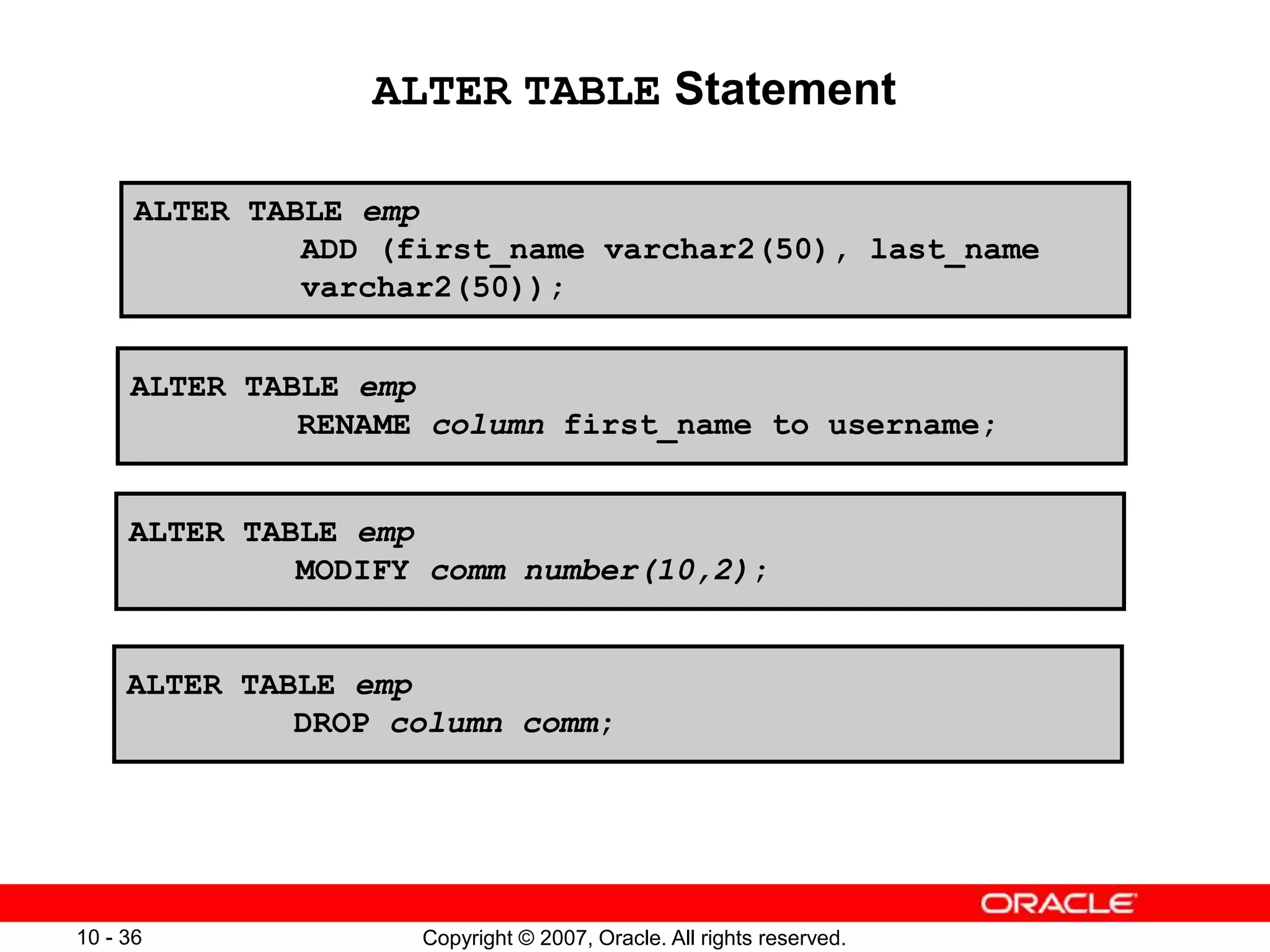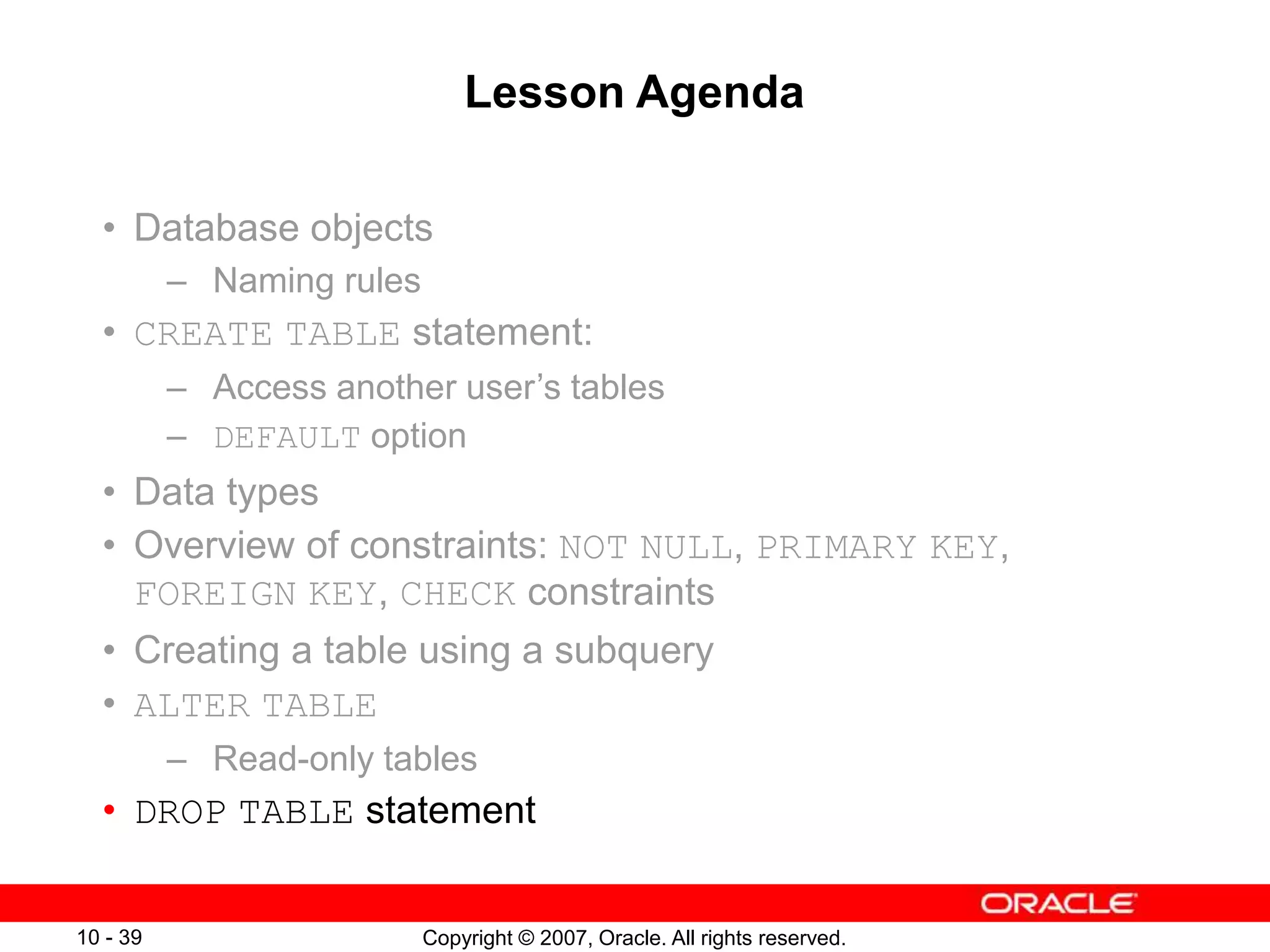This document discusses how to create and manage database tables using SQL statements in Oracle. It covers topics such as naming rules for tables, the CREATE TABLE statement including specifying data types and constraints, accessing other users' tables, and making changes to existing tables using the ALTER TABLE statement. The goal is to teach how to categorize database objects, understand table structure, create tables with different constraints, and describe how schema objects work together.
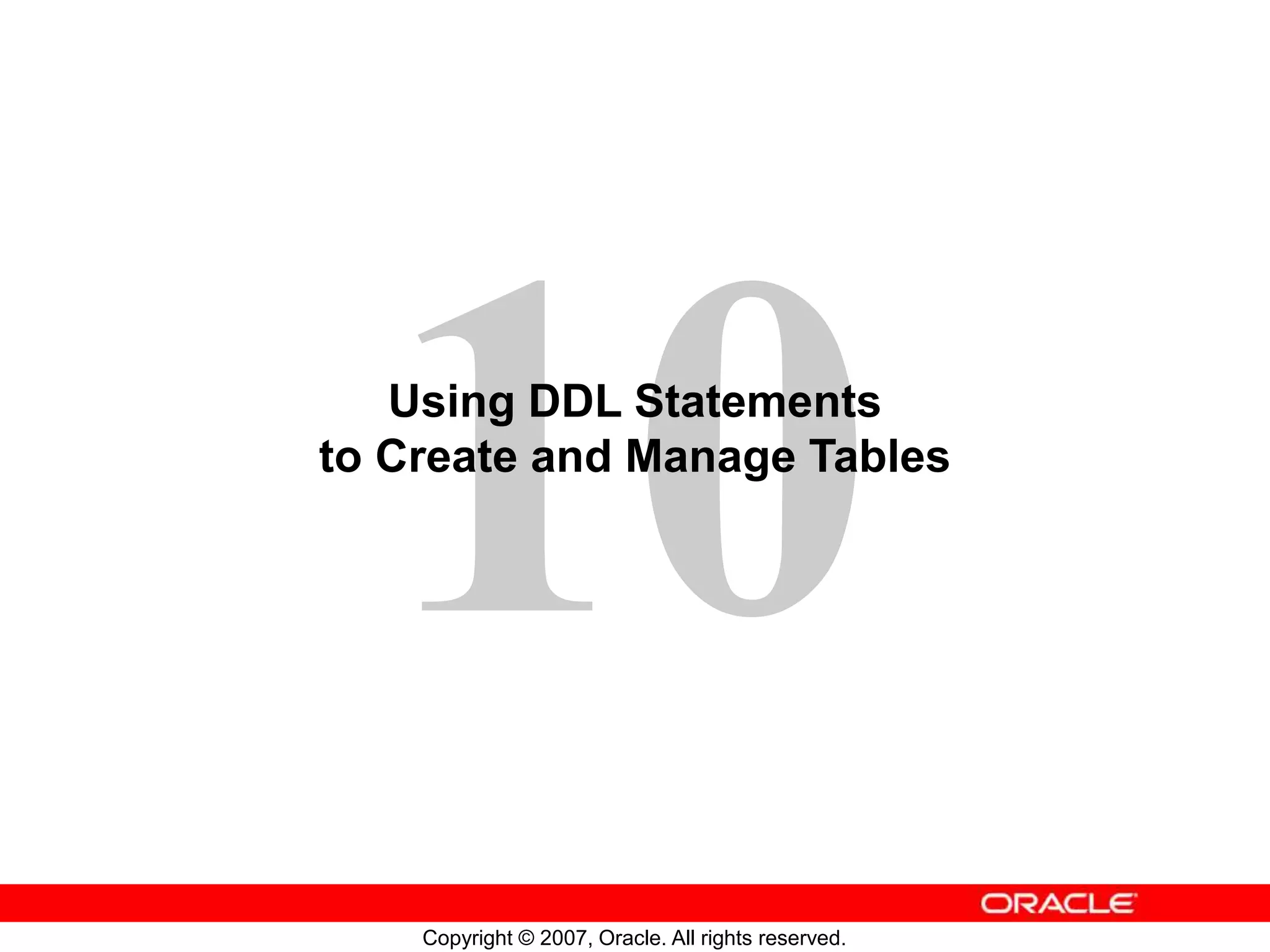
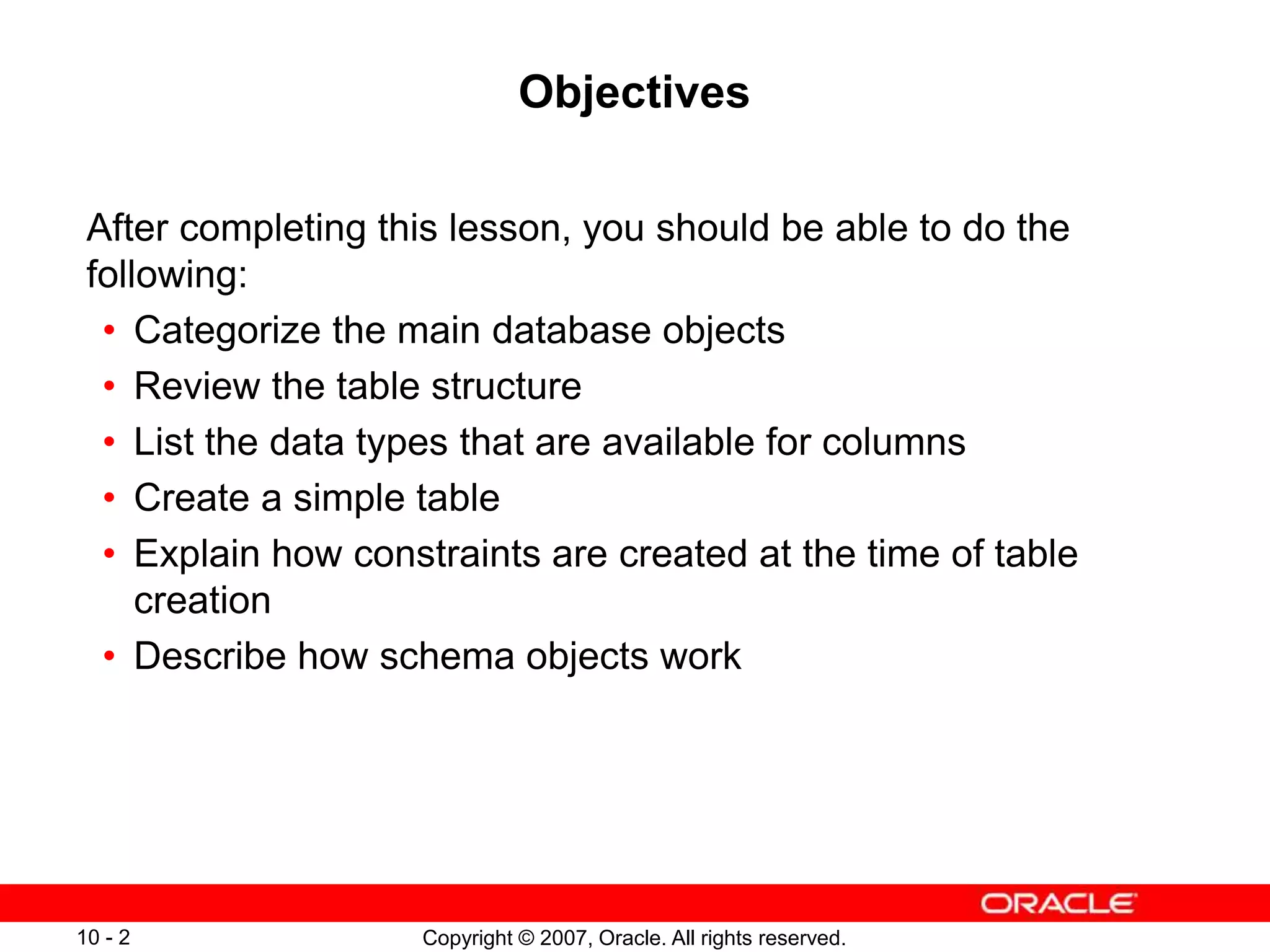




![Copyright © 2007, Oracle. All rights reserved.
10 - 7
CREATE TABLE Statement
• You must have:
– CREATE TABLE privilege
– A storage area
• You specify:
– Table name
– Column name, column data type, and column size
CREATE TABLE [schema.]table
(column datatype [DEFAULT expr][, ...]);](https://image.slidesharecdn.com/les10-230605125715-f9438cd6/75/Les10-ppt-7-2048.jpg)
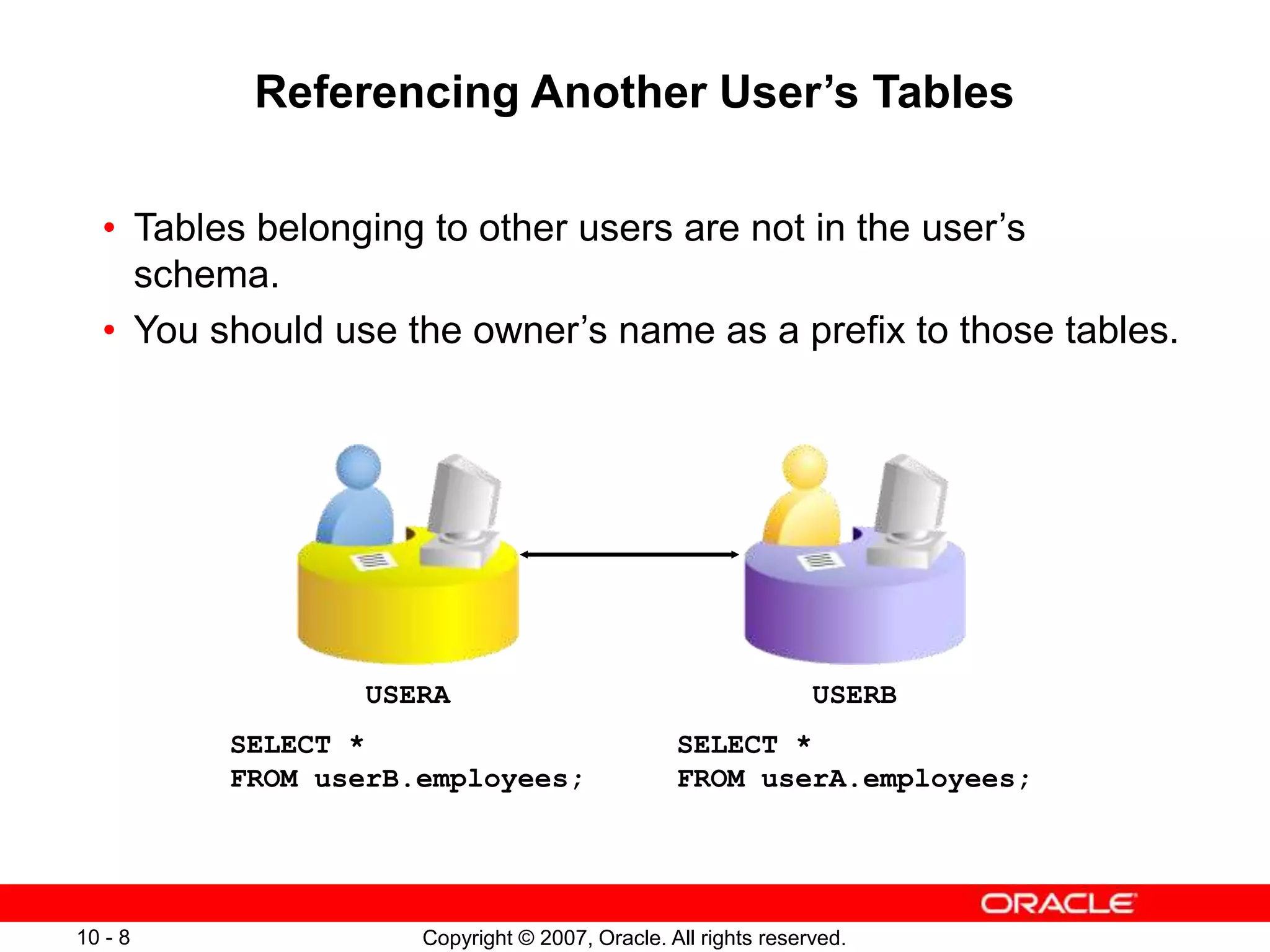
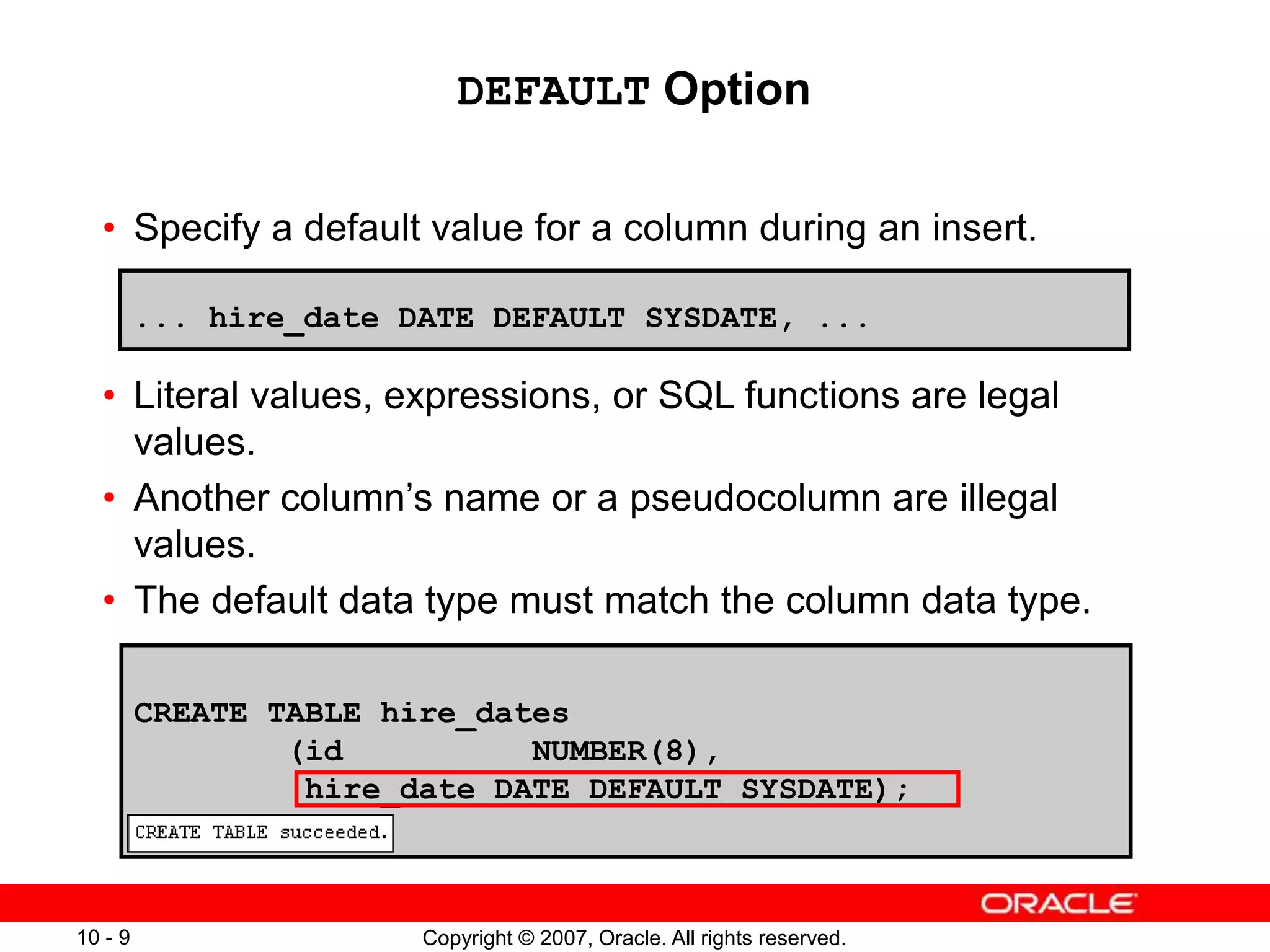

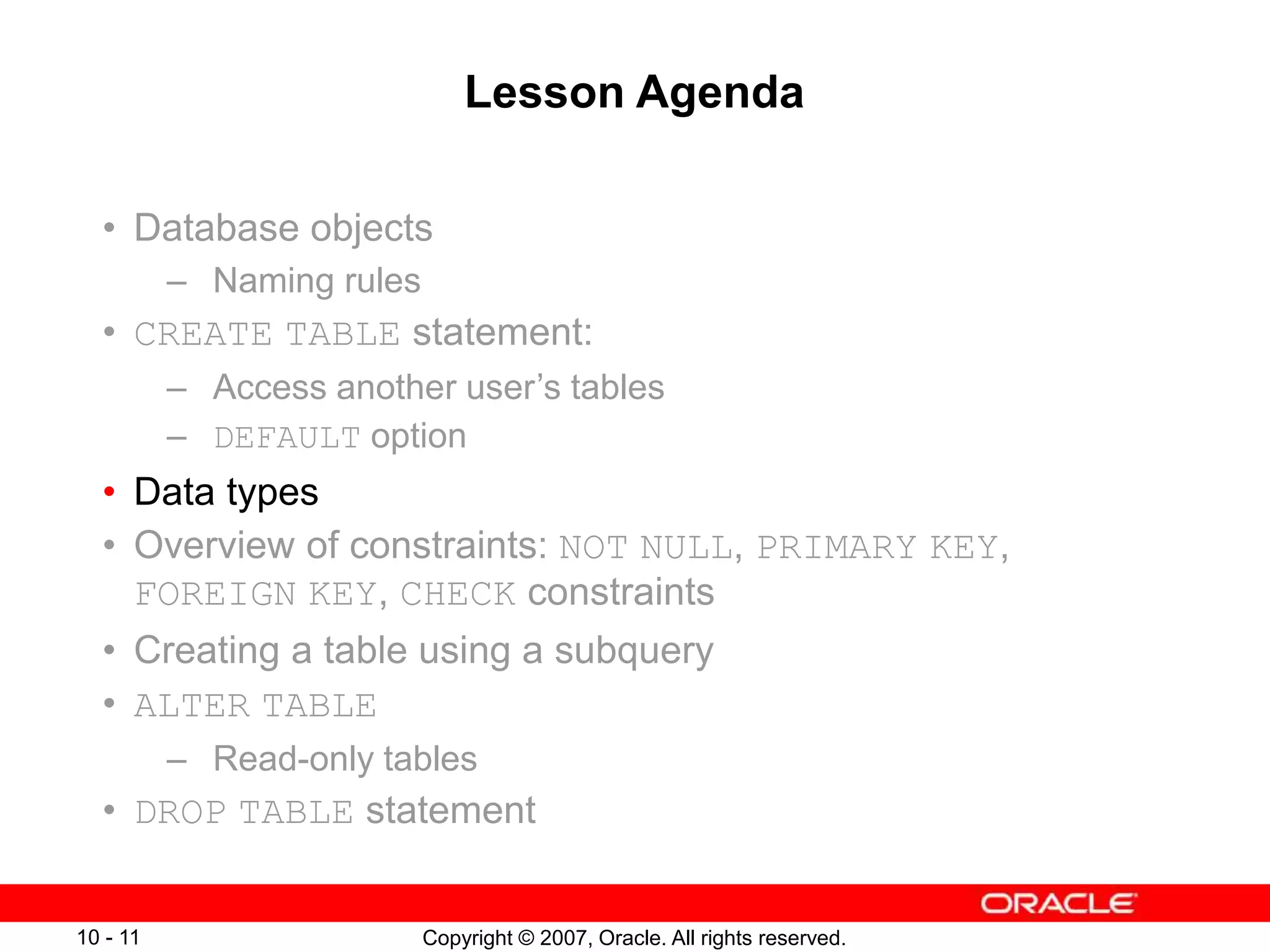
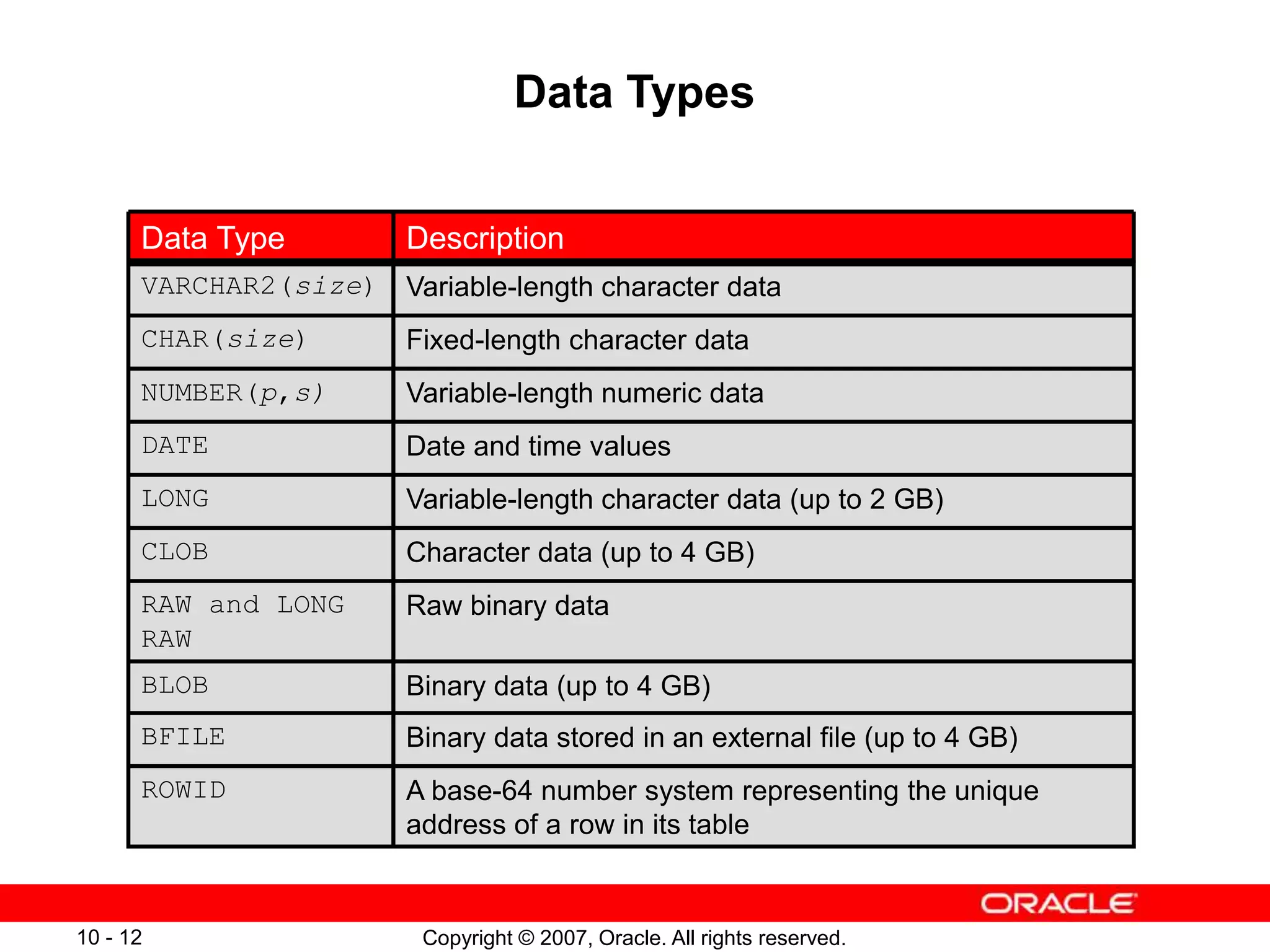
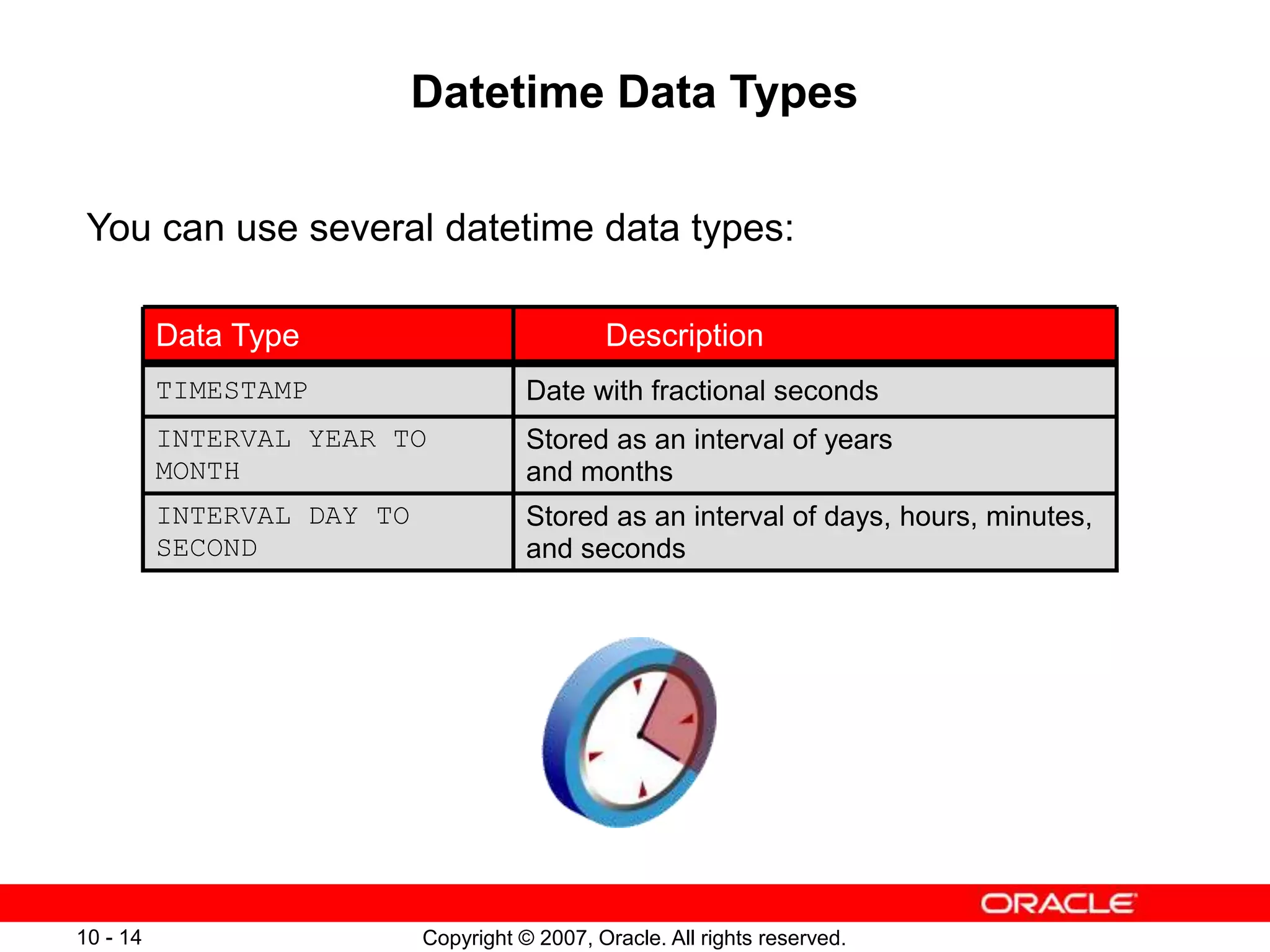


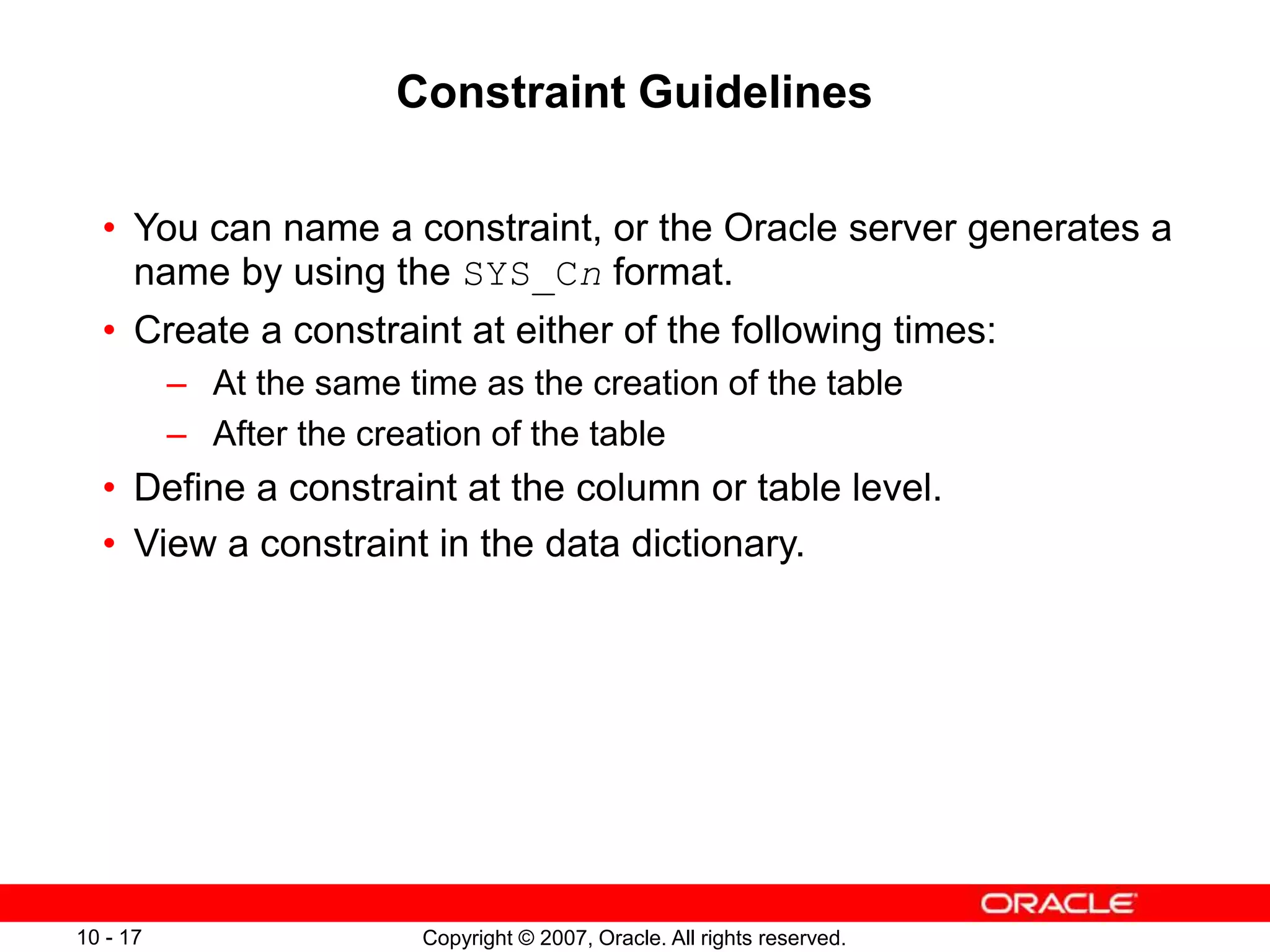
![Copyright © 2007, Oracle. All rights reserved.
10 - 18
Defining Constraints
• Syntax:
• Column-level constraint syntax:
• Table-level constraint syntax:
CREATE TABLE [schema.]table
(column datatype [DEFAULT expr]
[column_constraint],
...
[table_constraint][,...]);
column,...
[CONSTRAINT constraint_name] constraint_type
(column, ...),
column [CONSTRAINT constraint_name] constraint_type,](https://image.slidesharecdn.com/les10-230605125715-f9438cd6/75/Les10-ppt-17-2048.jpg)






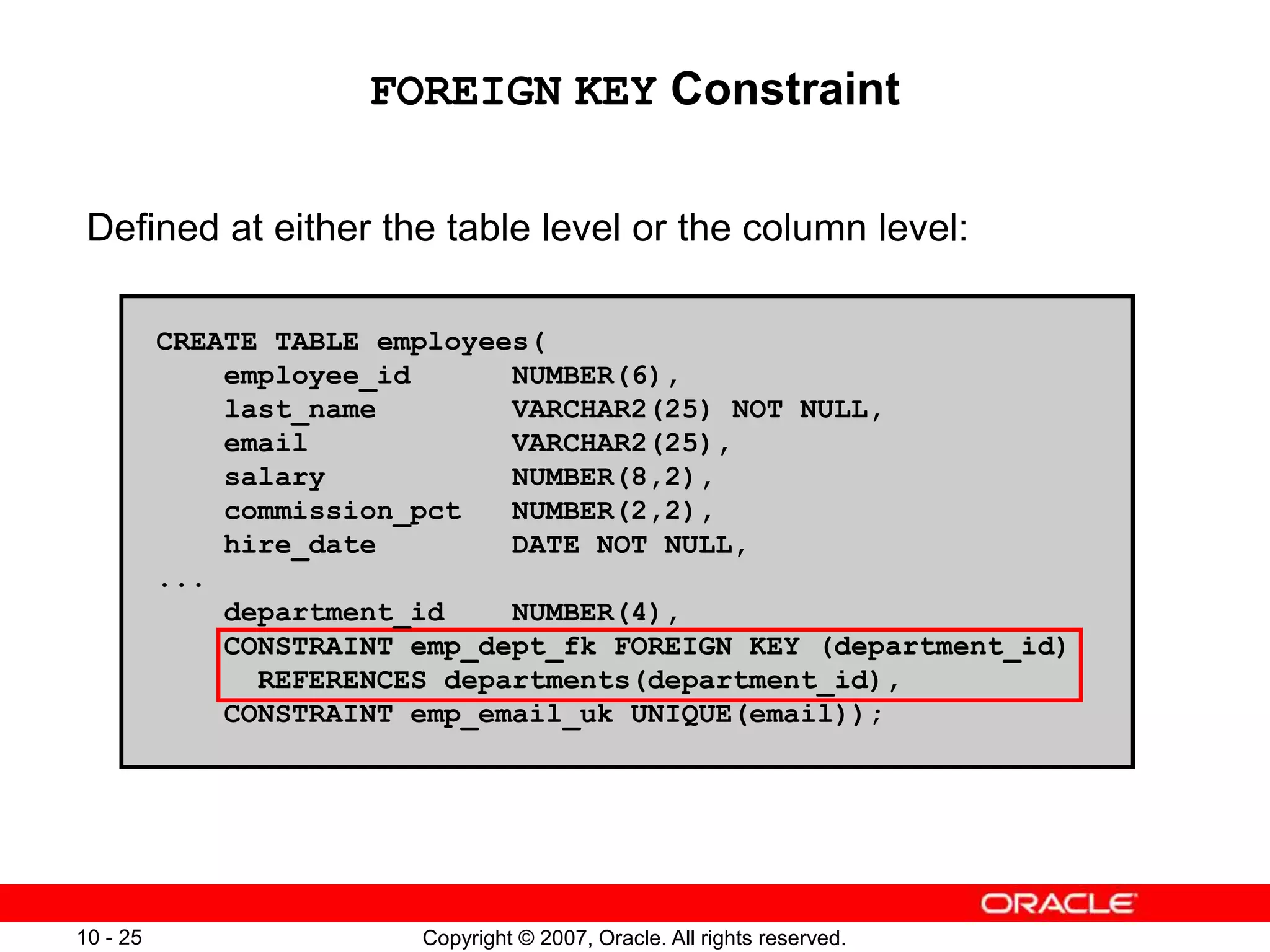



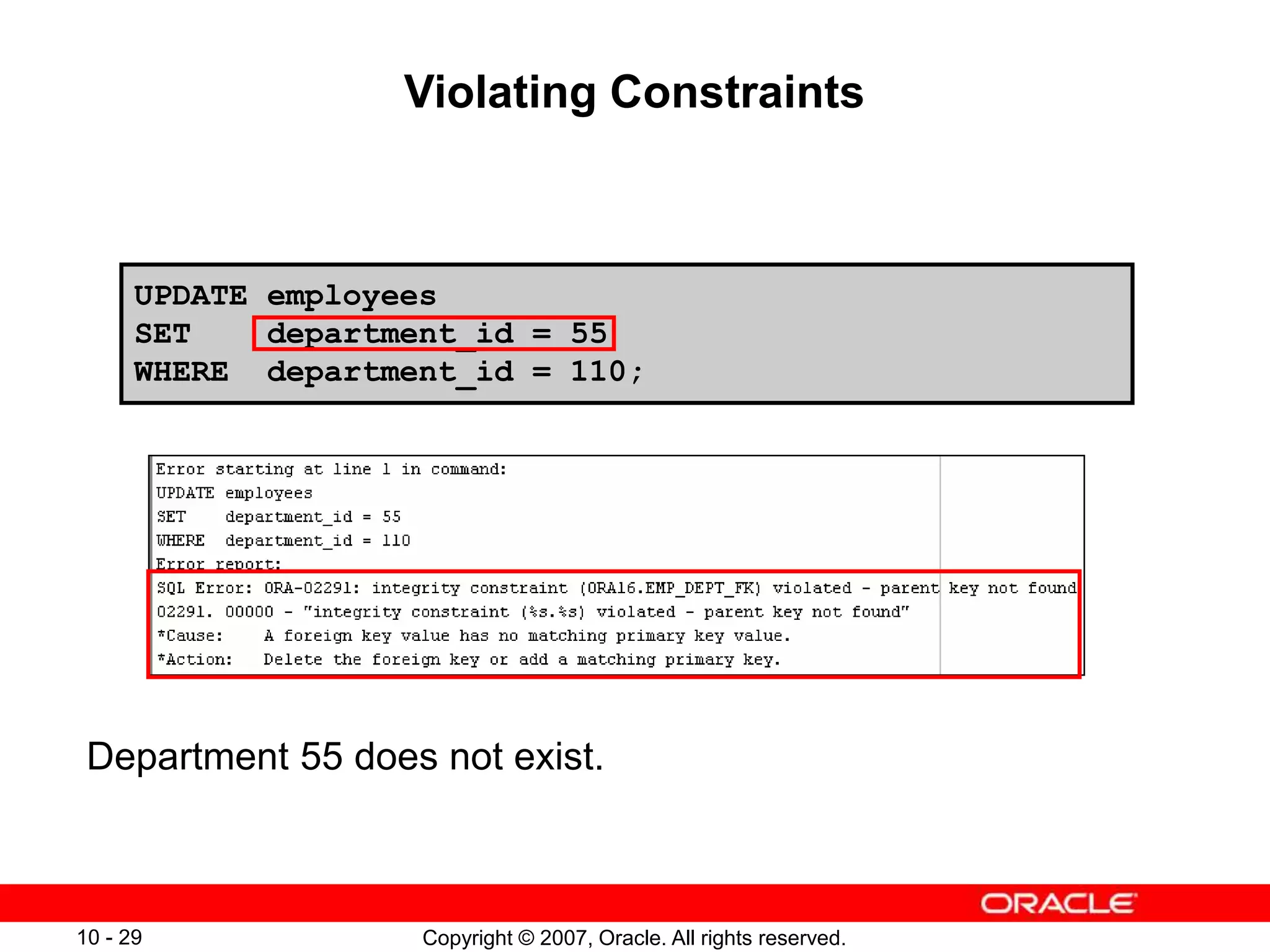


![Copyright © 2007, Oracle. All rights reserved.
10 - 32
Creating a Table
Using a Subquery
• Create a table and insert rows by combining the CREATE
TABLE statement and the AS subquery option.
• Match the number of specified columns to the number of
subquery columns.
• Define columns with column names and default values.
CREATE TABLE table
[(column, column...)]
AS subquery;](https://image.slidesharecdn.com/les10-230605125715-f9438cd6/75/Les10-ppt-31-2048.jpg)



